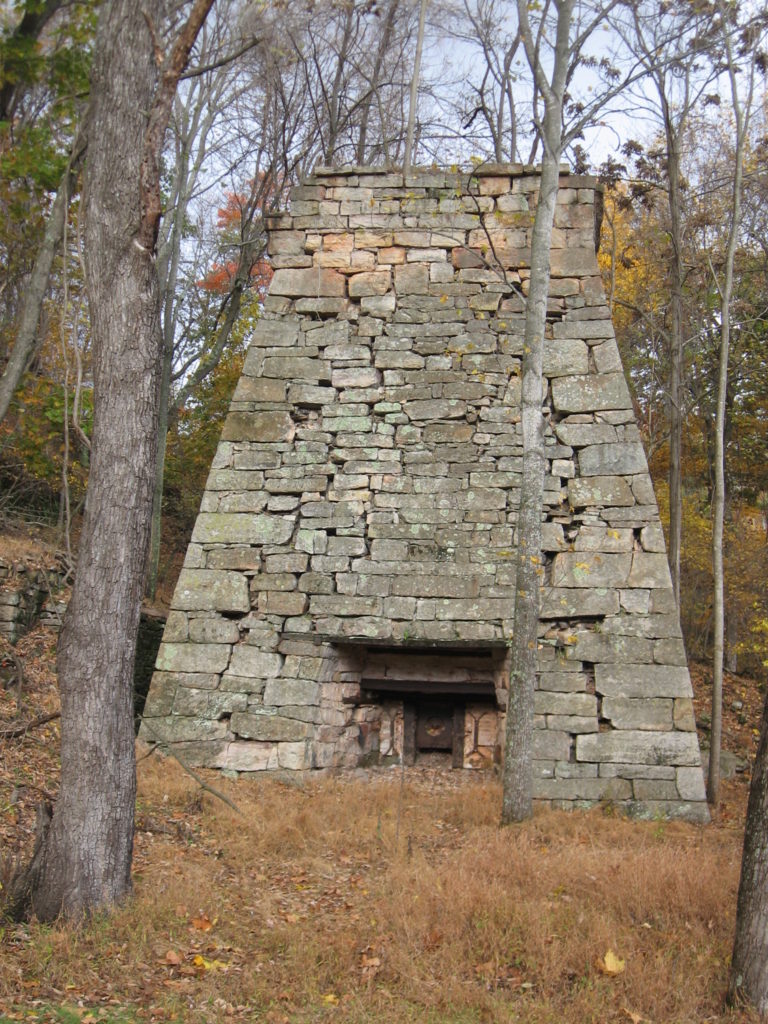Anyone interested in valley history owes it to themselves to read Norman H. Scott’s book, Shenandoah Iron. This treasure contains many stories about the prosperous iron industry that once thrived in this area and, together with its agriculture, created a climate not unlike today’s Silicon Valley.
Sadly, all that remains today of this once-thriving industry are cold silent furnaces sprinkled through the forests while many have disappeared completely. Improved processes and higher quality iron eventually rendered locally produced iron obsolete and the industry gradually died in the late nineteenth century with an occasional gasp into the early twentieth.
According to Scott, the town of Luray grew up around the Redwell Furnace, later renamed Isabella. After moving from Pennsylvania and establishing Pine Forge near New Market, Derrick Pennybacker built a blast furnace on Hawksbill Creek in the late 1700s. The enterprise grew to include a grist mill, sawmill, cafeteria, church, school, and general store.
George Washington used iron from this furnace for the armory at Harpers Ferry and Thomas Jefferson used it for stoves in Monticello and sash weights for the UVA Rotunda. An 1820 census reports the furnace employing 60-92 men, 45 women, and 25 boys and girls.
This thriving industrial complex suddenly collapsed in 1841 when the furnace fire went out and the crucible full of molten iron hardened into what was called a salamander. The only way to remove this enormous mass of metal was to disassemble the structure stone by stone and then rebuild it. Although this was planned, it never happened and thus forever ended iron manufacturing at that location.
Apparently the records don’t indicate what caused this tragic failure. Did someone go to sleep on the job? Did the workers strike for more money? Did a gully-washing thunderstorm drown out the charcoal? Unless new information is uncovered we will never know.
This economic catastrophe from another era demonstrates the vital importance of maintaining relationships. Marriages too must be stoked and fresh wood constantly added in order to keep the relationship warm and close. We do this through loving words, kind actions, shared experiences, and intentional effort. Failure to attend to one’s spouse causes the fires of love to die down and eventually go out.
Other human relationships also must be sustained. Regular interactions with children, parents, siblings, extended family, and friends help to stoke the fires of love and closeness. We also must guard against storms of anger or dishonesty that can douse the flames and create a salamander that can be nearly impossible to remove.
How much more important it is to maintain our relationship with Jesus. His indictment of the Ephesian Church in Revelation 2 was that they had lost their first love. Although they were going through some motions of following Him, their close loving relationship had begun to harden. Jesus encouraged them to go back and do the things they did at first in order to keep their fire from going out.
Many Christians well remember how wonderful they felt when they first met Jesus. Nothing could keep us from prayer, reading their Bible, or worshiping with other believers. Unfortunately, as time goes by and life happens, we sometimes neglect these important disciplines and even though Jesus hasn’t gone anywhere, we find ourselves further from Him.
Returning to those things we did at first is good advice not only for our marriages and human relationships, but also in regard for our connection with Jesus. Intentionally making time and expending effort to throw some fresh wood on these fires will raise the temperature and bring greater warmth.
As we reflect on the salamander that killed an industrial complex, let’s learn its lessons in order to keep our relationships with others and with Jesus close and vibrant. Don’t let the fire go out! Blessings, George
